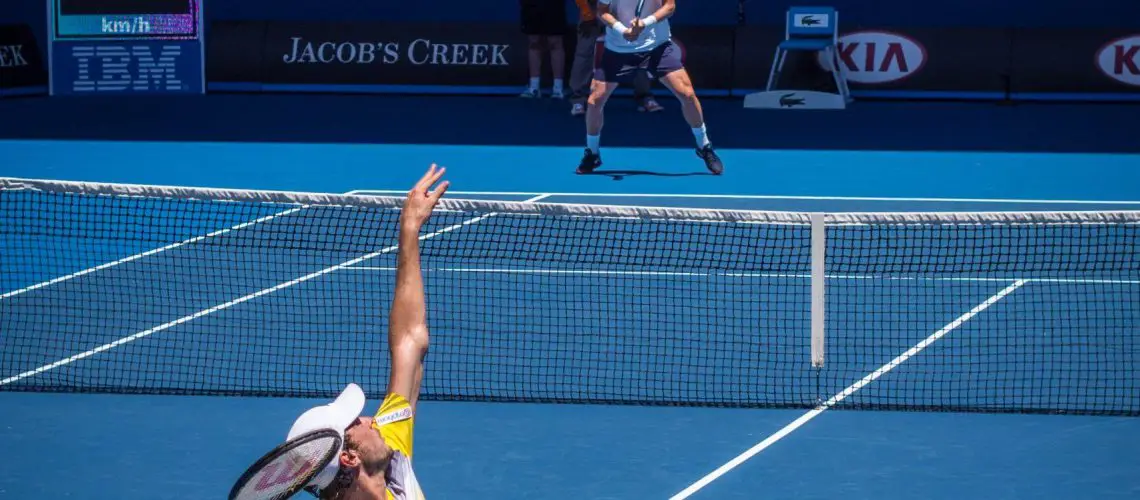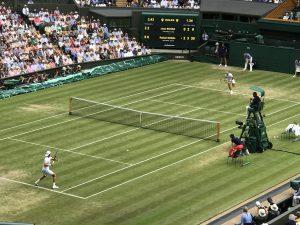We may earn money or products from the companies mentioned in this post.
Brief Overview of Tennis Balls’ Importance in the Sport

Tennis balls are an integral part of the sport, serving as the primary equipment used during matches and practice sessions These small, fuzzy spheres play a crucial role in facilitating the fast-paced nature of tennis, allowing players to showcase their skills and engage in exciting rallies
Whether you’re a professional player or a recreational enthusiast, having reliable tennis balls is essential for a satisfying game The bounce, speed, and overall performance of the ball can greatly impact your playing experience and strategy
Factors Affecting the Longevity of Tennis Balls

The lifespan of a tennis ball depends on various factors that can significantly affect its durability The type and quality of materials used in its construction play a crucial role in determining how long it will last
The surface on which tennis is played also plays a significant role Hard courts tend to wear down balls more quickly than clay or grass courts due to their abrasive nature Additionally, environmental conditions such as temperature and humidity can impact the longevity of tennis balls
Furthermore, the frequency and intensity of use also influence how long tennis balls remain playable High-intensity matches or frequent practice sessions can cause faster wear and tear compared to occasional recreational play
The Need for Understanding How Long Tennis Balls Last

Knowing how long tennis balls last is vital for both professional players and casual enthusiasts alike Replacing worn-out balls ensures optimal performance during matches by maintaining consistent bounce and speed
For professionals who rely on precision shots and strategic gameplay, using fresh tennis balls with predictable characteristics is imperative Similarly, recreational players seeking an enjoyable experience should consider replacing old or heavily used balls to maintain fairness and consistency throughout their games
Understanding the lifespan of tennis balls also helps players manage their equipment and make informed decisions about when to invest in new ones Proper care and storage techniques can prolong the longevity of tennis balls, ultimately saving players time and money in the long run
Tennis Ball Types and Their Lifespan

When it comes to tennis, the type of ball you use can greatly impact your game Two common types of tennis balls are pressurized and pressureless Each has its own unique construction, materials, and considerations when it comes to lifespan
Pressurized Tennis Balls
Pressurized tennis balls are constructed with a rubber core that is filled with air under pressure This internal pressure gives the ball its bounce and responsiveness on the court The outer cover is typically made of a durable felt material that provides grip and control during play
Ideal playing conditions for pressurized tennis balls include well-maintained courts with a consistent surface and temperature It is important to store these balls in a cool and dry place to maintain their pressurization Extreme heat or cold can affect the internal pressure, leading to a shorter lifespan
The lifespan of pressurized tennis balls varies depending on factors such as frequency of use, playing surface, and environmental conditions Generally, these balls have a shorter lifespan compared to pressureless ones due to the gradual loss of internal pressure over time However, they provide excellent performance during their prime
Pressureless Tennis Balls
Pressureless tennis balls have a different construction compared to pressurized ones These balls are made from solid rubber without any internal air pressure The outer cover is typically made of a durable felt material similar to pressurized balls
Ideal playing conditions for pressureless tennis balls include various court surfaces such as clay or asphalt, as they do not rely on internal air pressure for their bounce They also perform well in colder temperatures where traditional pressurized balls may lose some of their liveliness
When it comes to storage, pressureless tennis balls have an advantage Unlike pressurized balls, they do not lose their bounce over time, making them a cost-effective option for players who want longer-lasting balls However, the felt cover may wear out with heavy use
The lifespan of pressureless tennis balls is generally longer compared to pressurized ones They can withstand extensive play and maintain their bounce for an extended period However, it’s important to keep in mind that factors such as playing surface and frequency of use can still affect their overall durability
Factors Influencing Tennis Ball Longevity

Tennis ball longevity is influenced by various factors, including playing surface types, frequency of play, and storage practices Understanding these factors can help tennis players extend the lifespan of their balls and ensure optimal performance on the court
Playing Surface Types
1 Hard Courts:
Playing on hard courts can have a significant impact on ball bounce and wear over time The hard surface causes more friction, leading to increased abrasion and faster deterioration of the felt cover To extend the lifespan of tennis balls on hard courts, consider using slightly softer balls or opting for more durable options specifically designed for this type of surface
2 Clay Courts:
Clay courts provide a different set of challenges for tennis balls The soft nature of clay affects both ball bounce and fluffiness As the match progresses, clay particles stick to the felt cover, making it heavy and reducing its effectiveness To prolong ball lifespan on clay courts, regularly brush off excess clay from the balls during breaks and rotate them frequently to prevent excessive wear on one side
3 Grass Courts:
The unique properties of grass courts also impact tennis ball longevity While grass offers a faster pace with lower bounce than other surfaces, it can cause color change and wear over time due to its abrasive nature To maintain ball quality on grass courts, keep them clean from dirt or moisture after each use and replace them when they become noticeably worn or lose their vibrant color
Frequency of Play
1 Recreational Players:
The frequency at which recreational players should replace their tennis balls depends on usage patterns and personal preference As a general guideline, if you notice a significant decrease in performance or feel, it’s time to consider replacing the balls Regularly inspecting the condition of the felt cover can also help determine when to get new ones
2 Competitive Players:
For competitive players who engage in intense training sessions or frequent tournaments, tennis balls may need more regular replacement due to higher impact and wear rates Monitoring ball performance and responsiveness during practice matches is crucial in determining when it’s time for fresh balls that provide consistent bounce and feel
3 Professional Players:
Professional tennis players often replace their tennis balls after every few games or even during a match Their rigorous play demands optimal ball performance at all times, so they prefer using new balls frequently to ensure maximum consistency and control
Storage Practices
1 Proper Temperature Control:
Storing tennis balls at extreme temperatures can affect their longevity It is recommended to keep them in a cool, dry place away from direct sunlight or excessive heat, as this can cause rubber degradation and premature loss of pressure
2 Sealed Containers or Tubes – Pressurized vs Pressureless Balls:
To maintain ball pressure and prevent air leakage, store pressurized tennis balls in sealed containers or tubes when not in use On the other hand, pressureless balls do not require pressurization and can be stored in any suitable container without worry of losing their performance attributes
With these insights into factors influencing tennis ball longevity, players of all levels can make informed decisions regarding surface selection, frequency of replacement, and proper storage practices to optimize their gameplay experience while maximizing the lifespan of their tennis balls
Conclusion-When To Replace Your Tennis Balls & Why It Matters

Knowing when to replace your tennis balls is crucial for maintaining optimal performance on the court Over time, tennis balls can wear out and lose their ability to provide a consistent bounce, impacting your game In this article, we discussed the signs that indicate it’s time to replace your tennis balls, the impact of using worn-out balls on your game, and the importance of ball maintenance
Signs that indicate it’s time to replace your tennis balls
1 Reduced bounce: If you notice that your tennis balls are not bouncing as high as they used to or have become inconsistent in their bounce, it’s a clear sign that they need replacing A proper bounce is essential for accurate shots and overall gameplay
2 Flattened or excessively worn fuzz: The fuzz on a tennis ball plays a significant role in its performance When the fuzz becomes flattened or overly worn, it affects the ball’s aerodynamics and makes it harder to control during rallies
3 Discoloration and staining: Tennis balls can accumulate dirt and grime over time through regular use Discoloration and staining not only affect the appearance of the ball but also indicate that its surface has become compromised, leading to altered playing characteristics
The impact of using worn-out tennis balls on your game
1 Inconsistent play and frustration: Worn-out tennis balls can result in unpredictable bounces, making it challenging to anticipate shots accurately This inconsistency can lead to frustration, affecting both your confidence and enjoyment of the game
2 Potential injury risks: Using worn-out tennis balls increases the risk of injuries during play As their performance declines, players may compensate by applying more force or changing their technique, potentially straining muscles or causing other injuries
Final thoughts on the importance of ball maintenance for optimal performance
Regularly replacing your tennis balls and properly maintaining them is crucial for optimal performance on the court By ensuring that you have fresh, well-functioning balls, you can improve your consistency, accuracy, and overall enjoyment of the game Remember to monitor the signs indicating when it’s time to replace your tennis balls and invest in high-quality replacements to elevate your playing experience
Useful Links

Do Sealed Tennis Balls Go Bad?
What is a Lifetime Supply of Tennis Balls?
How Long Do Tennis Balls Last?
How long does a tennis ball last after the can is opened but …
How Long Do Tennis Balls Last? – TennisFocusOn
How Long Do Tennis Balls Last? – TennisLovers
How Long Do Tennis Balls Last?
How Long Do Tennis Balls Last? [2023] –
Tennis Ball Pressuriser Tube
Best Tennis Balls: The Top Picks for Your Next Match
How Long Do Tennis Balls Last? – Everything You Need To …
Do Tennis Balls Last Longer In The Can? – The Racket Life
6 Best Pressureless Tennis Balls + An In-Depth Product …
The Lifespan of Tennis Balls: How Long Do They Really …
The wear and lifetime of a tennis ball
Extra duty vs Regular Duty Tennis Balls
How Long Do Tennis Balls Last? (Before Needing …






